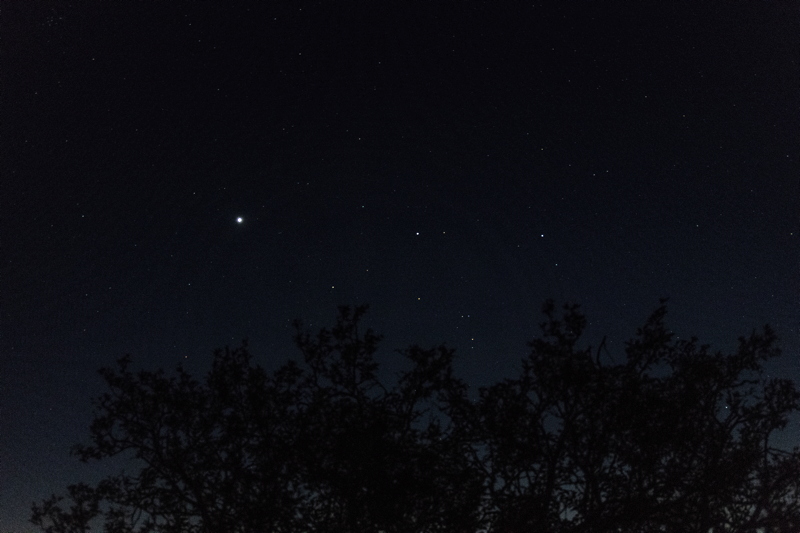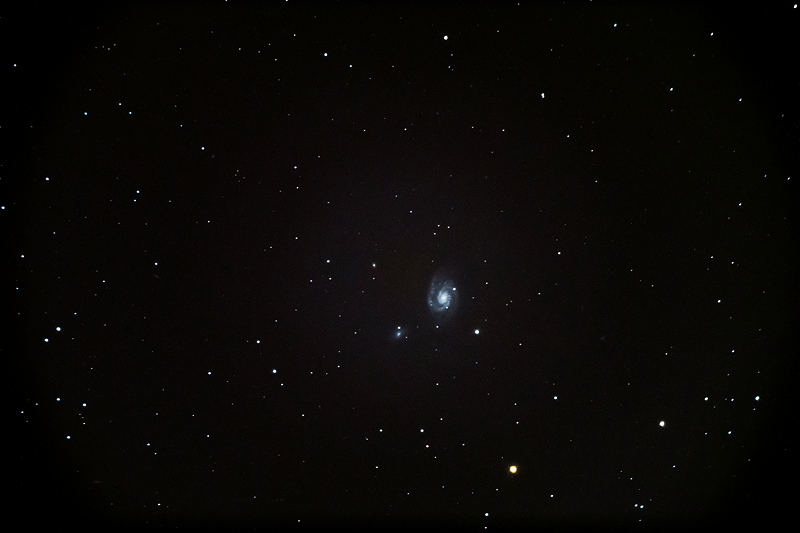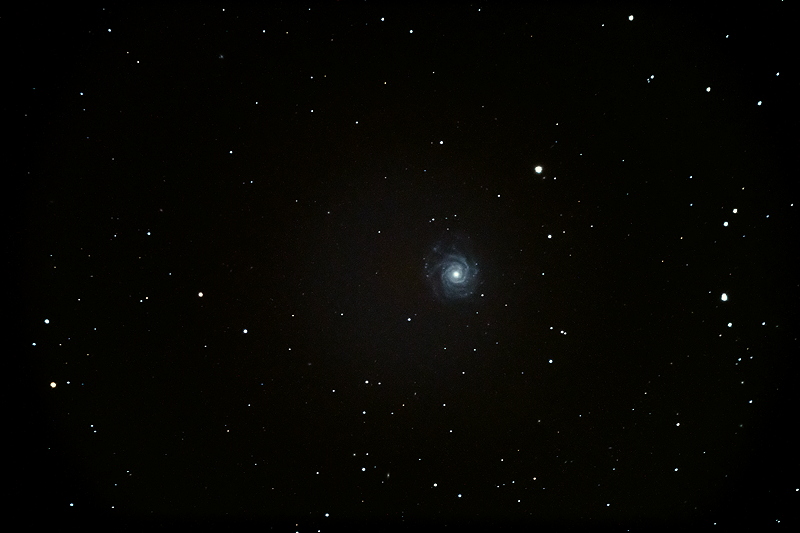Coolpix P900 ISS;
D850 DSLR Extragalactic Supernova Project
Posted: 12 June 2018
|
Open: Monday, 11 June 2018, 1921 MST Temperature: 82°F |
Session: 1250 Conditions: Clear |
Equipment Used:
12" f/8 LX600 w/StarLock
2" 24mm UWA eyepiece
Camera:
Coolpix P900
D850 DSLR
1934 MST: sunset.
1935 MST: LX600 ON, StarLock OFF, High Precision OFF.
Viewed Venus, 102X. Viewed Jupiter, 102X. The four Galilean Moons were visible.
I then began preparing for another attempt at imaging the International Space Station (ISS) using the Nikon Coolpix P900 digital camera. As I have mentioned on some previous reports, the P900 has the shutter speed and ISO values linked together. I was hoping to use 1/4000sec to reduce image blur from camera motion, but the P900 would not allow that speed at FL 2000mm (35mm equivalent) and ISO 400. The fastest shutter speed at any ISO value and 2000mm was 1/2000sec. The ISS pass would be low in the sky so I hoped motion blurring would be minimal.
2008 MST: the first Kissing Bug seen this night actually attacked me. I knocked him off my shirt and lost sight of it. 2014 MST: the Kissing Bug attacked me again.
2026 MST: ISS pass began. Here are six views of the ISS from the P900 video (f/6.5, 1/2000sec, ISO 400, FL 2000mm):

The left image is from the beginning of the pass, with the ISS low in the northwestern sky and very far away. As it rose higher in the sky, it came closer and brighter. Some structure is visible in the middle images, but the images are overexposed. The last image on the right is just prior to the ISS entering the Earth's shadow, low in the southeast. While my P900 tests with the International Space Station have not yielded great images of the ISS, they have demonstrated that it is possible to show some of the shape of the ISS with a handheld video at a focal length of 2000mm. The limitations of the exposure value will make proper exposures difficult.
2043 MST: the planet Venus and the Gemini constellation stars Pollux and Castor were nicely aligned in the western sky, as seen in this D850 DSLR photo (f/4.5, 1/2sec, ISO 6400, FL 70mm):

Mouseover or tap on image for labels
On the previous session I had noticed possible "field rotation" in the image of the Crescent Nebula. I decided I should check the telescope mount's polar alignment.
2049 MST: dome OFF (onto PZT).
While waiting for the sky to get a little darker I prepared the D850 DSLR for prime focus imaging for my Extragalactic Supernova Project.
2058 MST: Kissing Bug #2 terminated.
2100 MST: began StarLock Automatic Drift Alignment. No mount adjustments were needed. 2109 MST: Drift Alignment completed.
Took a quick look at Jupiter, 102X. Dome ON.
SYNCed on the star Denebola. Mounted the D850 at prime focus and focused on Denebola.
2125 MST: High Precision ON.
Slewed to the first galaxy imaging target for the night. 2127 MST: StarLock ON.
Took the following StarLock autoguided, 5 minutes, ISO 6400, White Balance 4000K, images:
NGC3893

NGC3938

NGC3953

NGC3992 (M109)

2200 MST: Kissing Bug #3 terminated.
2211 MST: StarLock OFF, High Precision OFF. Ended imaging.
Viewed M109 (galaxy), 102X.
2221 MST: viewed Jupiter, 102X. Three moons now visible.
Viewed Saturn, 102X, but it was too low in the southeast for good viewing.
2224 MST: LX600 OFF.
|
Close: Monday, 11 June 2018, 2233 MST Temperature: 74°F |
Session Length: 3h 12m Conditions: Clear |
Comments are welcome using Email. Twitter users can use the button below to tweet this report to their followers. Thanks.
Cassiopeia Observatory Home Page
Copyright ©2018 Michael L. Weasner / mweasner@me.com
URL = http://www.weasner.com/co/Reports/2018/06/12/index.html
